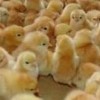
News briefing:

News briefing:
The guinea fowl, also known as the pheasant, is a wild fowl. Its meat tastes good and is rich in nutrition. Therefore, it has become an important breeding project after artificial domestication. With the development of the breeding industry, breeding guinea fowl has also become a mainstream. So what should be paid attention to when cultivating guinea fowl and where should guinea fowl breeding be more suitable? Let's take a look.
What should be paid attention to in guinea fowl breeding?
1. Site construction
The construction of chicken coops is to improve the suitable environment for the growth and reproduction of chickens. It is an important part of breeding guinea fowls. First of all, the construction of chicken coops should be kept away from environmental pollution, so as not to affect the growth and development of guinea fowls. The chicken coop is an important part of the survival of guinea fowl, which is related to its breeding management and economic benefits, so there are several issues to pay attention to when choosing an address. The first is the climate, depending on whether the temperature, wind, and disastrous weather affect the growth of the guinea fowl; the second is the terrain. Choose a terrain that is high and flat, leeward to the sun, and well-drained. Use a gentle slope and an easy-draining site. 3-5 degrees is appropriate, not more than 25 degrees. In addition, it must be close to the water source. The guinea fowl farm uses a lot of water. In addition to daily drinking water, it is necessary to clean the chicken farm and personnel. Therefore, there must be a clean and sufficient water source near the chicken farm.
2, precautions for brooding
The incubation period of guinea fowl is generally 26 days. During the incubation period, the temperature must be controlled. The temperature in the early stage is generally controlled at about 38 degrees. As the age increases, the temperature is gradually reduced, and the temperature is maintained at 27 degrees in the later period. In addition, the humidity of the hatching room should be controlled well, preferably 55-70%. In brooding, it is necessary to keep the chicks of the same age together, do a good job of ventilation, ensure that there is no peculiar smell in the room, and keep the relative humidity at about 50-60%. If there is a large amount of dust in the air, pay attention to cleaning up to avoid the chicks. Suffering from upper respiratory disease.
3. Precautions for feeding
In feeding, it is necessary to pay attention to sufficient and even light. Proper light can increase the appetite of the chickens, increase food intake, and promote growth and development. However, the intensity of light should be paid attention to. It is not suitable to travel far to the chickens for normal feeding and drinking. When the chicks grow to a certain extent, in order to facilitate management, it is necessary to cut off the wings and light, and cut off the wings of the chicks in time to avoid escape. Pay attention to the cleaning and disinfection of the chicken coop to reduce unnecessary losses, increase the survival rate, and increase the profit.
Where is guinea fowl suitable for breeding?
The guinea fowl breeding base should be located in a quiet, south-facing, dry ground, and well-ventilated place. Sandy soil is more suitable to meet the sand bathing habits of guinea fowl. Generally, idle houses in rural households can be used for breeding after proper repairs and renovations. In order to facilitate the breeding and management, separate brooding houses and rearing houses are set up, and a variety of trees or grass are needed around the chicken house to ensure fresh air in the chicken farm.
Date of opening:1970-01-01 Shop address: Main products: Store certification time:1970-01-01 08:00:00
Store Name: Principal: Contact number: email: